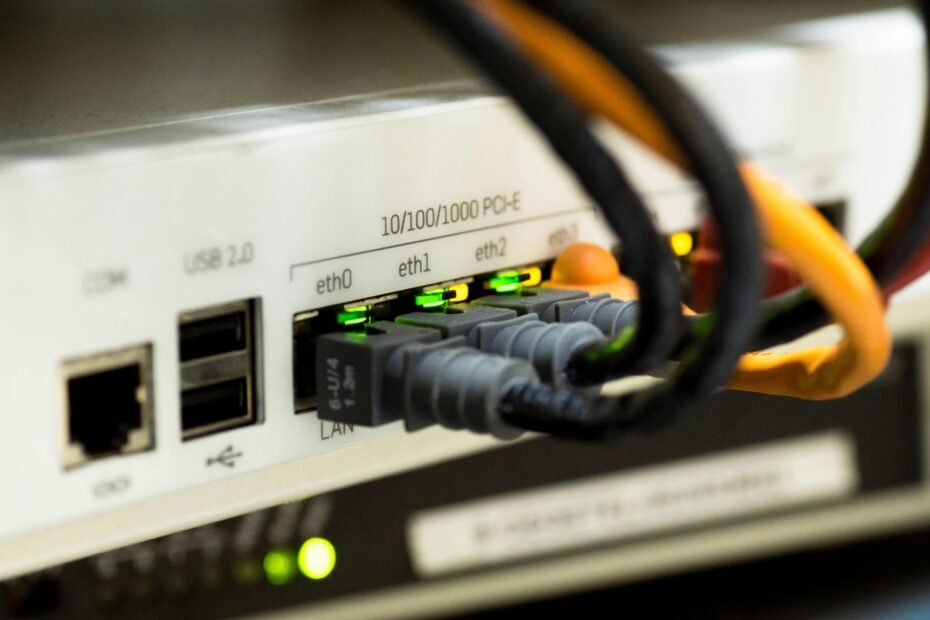Smart Networking: Unlocking the Role of Ethernet Switching in Modern Connectivity
Key Takeaways:
- Ethernet switches form the backbone of modern data networks, streamlining communication.
- Ethernet switching improves network performance by optimizing data flow and reducing traffic congestion.
- Choosing the correct type of Ethernet switch is crucial for efficiency, scalability, and security.
Introduction
In an era where digital transformation dictates the pace of business and personal interactions, the role of robust and efficient networking cannot be overstated. Central to this networking efficiency is Ethernet switching, a pivotal technology that enables multiple devices to communicate seamlessly within a network. As we see an explosion in the variety and volume of devices connecting to networks—from smartphones and smart home gadgets to enterprise-level servers—understanding how to manage this traffic is crucial. Ethernet switches effectively manage data flow, directing packets precisely to their appropriate destinations, thus preventing network congestion and ensuring smooth communication. This article explores the integral role of Ethernet switching in modern connectivity, offering insights into the different types of switches available and guidance on choosing the most suitable option for varying network needs.
Understanding Ethernet Switching
At the heart of modern networking lies the pivotal device known as the ethernet switch. This device operates as the traffic manager within a local area network (LAN), orchestrating data movement between devices such as computers, servers, printers, and other connected gadgets. Ethernet switches receive incoming data packets from these devices and forward them to the correct outgoing ports, ensuring they reach their intended destinations swiftly and effectively. This process reduces unnecessary data collisions and mitigates network chaos by establishing orderly data flow. Such organized management ensures that bandwidth is efficiently utilized and latency is minimized, providing an optimal end-user experience that supports simple and complex data exchanges.
Types of Ethernet Switches
The diversity in Ethernet switch types mirrors the vast array of networking requirements encountered in different environments, from home offices to multinational corporations:
- Unmanaged Switches: These cost-effective, plug-and-play devices require minimal configuration and management. Unmanaged switches are perfect for basic networking needs in small setups, like connecting a few devices in a home or small office without complex control features. Despite their simplicity, they effectively enhance network functionality by managing straightforward device connectivity.
- Managed Switches: Managed switches are designed for critical network control and performance monitoring environments. They offer comprehensive features such as VLANs for network segmentation, SNMP for monitoring network performance, and QoS (Quality of Service) for prioritizing traffic types. Managed switches are essential in enterprise settings, enabling IT teams to manage network settings remotely, ensuring security, and optimizing resources for high-performance operations.
- PoE (Power over Ethernet) Switches: Offering the dual advantage of power and data over the same network cable, PoE switches simplify the deployment of devices like security cameras, access points, and VoIP phones, especially in areas lacking power outlets, and nbn cabling adelaide can ensure reliable connectivity for these devices. This functionality reduces installation costs and supports network expansion flexibility, allowing devices to be placed optimally without electrical constraints.
Benefits of Ethernet Switching
Ethernet switching offers a myriad of benefits that enhance network performance and capacity:
- Improved Network Performance: Ethernet switches are crucial in managing data traffic to avoid congestion, ensuring a smooth and continuous flow of information within a network. This capability is vital in settings where multiple devices and applications are vying for bandwidth, such as businesses relying heavily on cloud services and media streaming.
- Scalability: As organizations grow, so too do their networking demands. Ethernet switches provide a scalable solution, allowing additional devices and increased traffic loads to be accommodated without any significant overhaul to the existing network infrastructure. This adaptability ensures that the network performs optimally with more users and applications.
- Reliability: By incorporating features such as redundancy protocols and fault tolerance, Ethernet switches contribute to network stability and reduce the impact of potential failures. These features are particularly important in mission-critical applications where downtime can result in significant disruptions or financial loss.
- Security: With the increasing importance of data privacy and integrity, Ethernet switches—mainly managed—offer robust security features. These include VLANs to separate traffic and protect sensitive data and access controls to prevent unauthorized device connections, ensuring network security layers are upheld.
Choosing the Right Switch for Your Network
Selecting the optimal Ethernet switch involves considering the specificities of your network requirements, balanced with budgetary constraints:
- Small Networks: In home and small business settings with relatively modest networking requirements, unmanaged switches can provide straightforward connectivity solutions without requiring extensive features, keeping both complexity and costs low.
- Medium to Large Networks: For more extensive networks, managed switches offer the advanced features necessary for effective network management and operation. With capabilities such as performance monitoring and configuration flexibility, managed switches can significantly enhance network operations’ efficiency and security.
- Power Needs: Deploying devices in areas lacking electrical infrastructure calls for PoE switches, ideal for supporting distributed installations of networked devices. This technology simplifies the logistics of deployments and contributes to lower operational costs in the long term by reducing the need for additional power solutions.
- Hybrid Solutions: Certain environments may benefit from a combination of managed, unmanaged, and PoE switches, optimizing cost-effectiveness and control over network operations. Hybrid solutions can be tailored to meet the precise needs of the network, providing a balance between simplicity, power, and flexibility.
Conclusion
Ethernet switching is integral to the operational success of modern digital networks, providing the necessary infrastructure to support efficient communication and data exchange. By understanding different types of Ethernet switches and their respective applications, you can tailor your network setup to meet specific demands, ensuring scalability, reliability, and security. Whether setting up a home network or expanding a corporate setup, choosing the right Ethernet switch lays a strong foundation for a seamless and efficient connectivity experience, paving the way for future growth and adaptation in the ever-evolving digital landscape.
